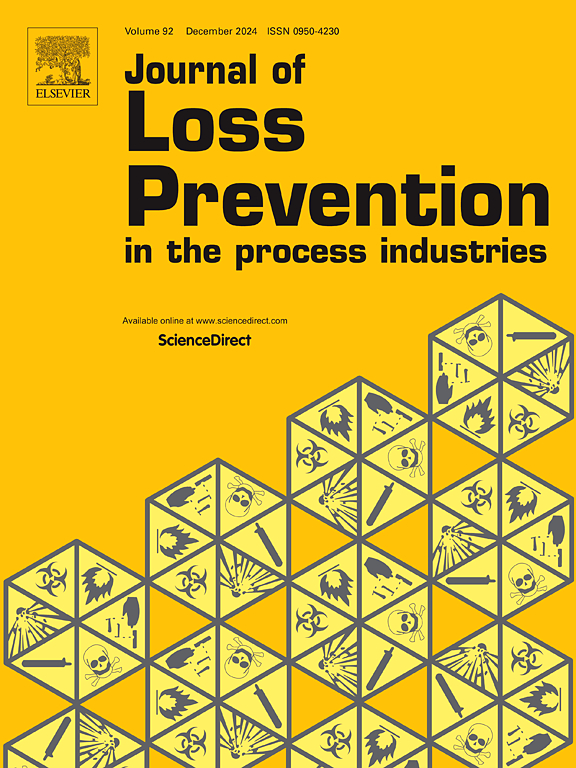CO2、N2、He抑制氢气爆炸的实验及化学动力学研究
IF 3.6
3区 工程技术
Q2 ENGINEERING, CHEMICAL
Journal of Loss Prevention in The Process Industries
Pub Date : 2025-04-23
DOI:10.1016/j.jlp.2025.105654
引用次数: 0
摘要
氢能产业具有巨大的未来发展潜力,但氢气固有的危险特性使其在生产、运输和储存过程中极易发生爆炸风险。研究表明,加入惰性气体可有效抑制h2 -空气爆炸。本研究旨在加深对惰性气体抑制机理的理解。本文采用实验方法和计算模拟相结合的方法,比较分析了CO2、N2和He对h2 -空气爆炸的阻尼效应。从实验的角度来看,惰性气体较大的比热容使它们能更有效地从反应区吸收热量,这就解释了这一现象。此外,通过降低层流燃烧速度,惰性气体的加入延长了爆炸的持续时间。这种延长与热损失呈正相关,导致更大的整体散热。CHEMKIN模拟结果表明,CO2比N2和He更有效地抑制活性自由基,使其对氢爆炸的抑制作用更强。此外,CO2更有效地抑制了元素反应,促进了特定的负元素反应R99。此外,CO2对控制H2转化为H2O的基本反应R84也有较强的抑制作用。本研究提出了抑制氢气爆炸的理论框架,同时也为气体爆炸抑制技术的实施提供了必要的技术指导,凸显了其对氢能安全的重要意义。本文章由计算机程序翻译,如有差异,请以英文原文为准。
Experimental and chemical kinetics research on the suppression of hydrogen explosion by CO2, N2, and He
The hydrogen energy industry holds significant potential for future development, but the inherent hazardous properties of hydrogen make it highly susceptible to explosion risks during production, transportation, and storage. Studies have shown that the addition of inert gases can effectively suppress H2-air explosions. This study aims to enhance comprehension of the inhibitory mechanisms of inert gases. It achieves this by utilizing both experimental methodologies and computational simulations to analyze the damping effects of CO2, N2, and He on H2-air explosions comparatively. From an experimental standpoint, the greater specific heat capacity of inert gases allows them to absorb heat more effectively from the reaction zone, which explains this phenomenon. Additionally, by reducing the laminar burning velocity, the addition of inert gases extends the duration of the explosion. This prolongation is positively correlated with heat loss, resulting in a greater overall heat dissipation. CHEMKIN simulation results suggest that CO2 suppresses reactive free radicals more effectively than N2 and He, making its inhibitory effect on hydrogen explosions stronger. Additionally, CO2 more effectively suppresses elementary reactions and promotes the specific negative elementary reaction R99. Moreover, CO2 also demonstrates a stronger inhibitory effect on the elementary reaction R84, which governs the conversion of H2 to H2O. This study advances the theoretical framework for hydrogen explosion suppression while also offering essential technical guidance for implementing gas explosion suppression technologies, highlighting its significant importance for hydrogen energy safety.
求助全文
通过发布文献求助,成功后即可免费获取论文全文。
去求助
来源期刊
CiteScore
7.20
自引率
14.30%
发文量
226
审稿时长
52 days
期刊介绍:
The broad scope of the journal is process safety. Process safety is defined as the prevention and mitigation of process-related injuries and damage arising from process incidents involving fire, explosion and toxic release. Such undesired events occur in the process industries during the use, storage, manufacture, handling, and transportation of highly hazardous chemicals.

 求助内容:
求助内容: 应助结果提醒方式:
应助结果提醒方式:


